Tonsillitis recovery time. Tonsillitis in Adults: Symptoms, Treatment, and Recovery Time
What are the common symptoms of tonsillitis in adults. How long does tonsillitis typically last in adults. What treatments are available for tonsillitis in adults. When should an adult with tonsillitis seek medical attention. What are the risk factors for tonsillitis in adults. How can adults manage tonsillitis symptoms at home. When might a doctor recommend a tonsillectomy for an adult with recurring tonsillitis.
Understanding Tonsillitis in Adults: Causes and Prevalence
Tonsillitis, an inflammation of the tonsils, is often associated with children and teenagers. However, adults are not immune to this condition. While less common in the adult population, tonsillitis can still cause significant discomfort and disruption to daily life.
The primary causes of tonsillitis in adults are:
- Viral infections (responsible for up to 70% of cases)
- Bacterial infections (particularly group A Streptococcus)
Viral tonsillitis can be caused by various pathogens, including those responsible for the common cold, laryngitis, and the Epstein-Barr virus (which causes mononucleosis). Bacterial tonsillitis, often referred to as strep throat, is typically caused by group A Streptococcus.

Is tonsillitis more prevalent in certain adult populations? Adults who have frequent contact with children, work in crowded environments like day care centers, or live in close quarters such as military barracks are at a higher risk of developing tonsillitis. This increased risk is primarily due to the highly contagious nature of the condition and its prevalence among children.
Recognizing Tonsillitis Symptoms in Adults
Identifying tonsillitis in adults requires an understanding of its characteristic symptoms. The most common signs include:
- Sore throat
- Red, swollen tonsils
- Difficulty swallowing
- Fever
- Headache
- Coughing
- Swollen lymph nodes in the neck
- Fatigue
- Nasal congestion
- Sneezing
- Loss of appetite
- Hoarse voice
Can the symptoms help differentiate between viral and bacterial tonsillitis? While there is significant overlap, bacterial tonsillitis often presents with some distinct characteristics:
- Sudden onset of symptoms
- Absence of cough (which is more common in viral infections)
- Tender lymph nodes in the neck
- White, pus-filled spots on the tonsils
- Bad breath
- High fever
It’s important to note that these distinctions are not absolute, and a proper diagnosis typically requires medical evaluation and testing.
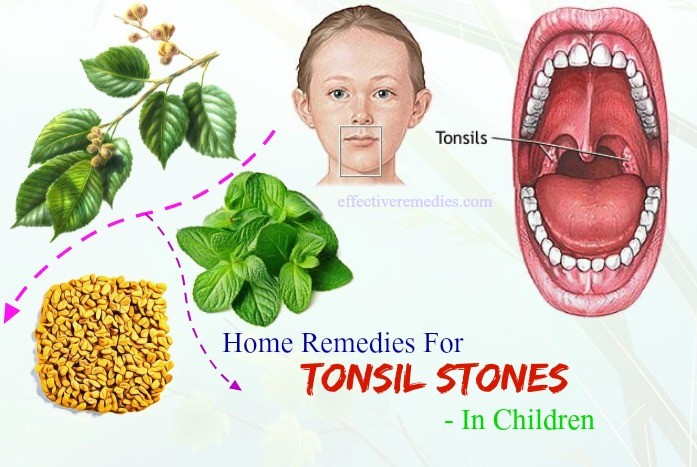
Treatment Options for Adult Tonsillitis
The approach to treating tonsillitis in adults depends on its cause and severity. For most cases, especially those of viral origin, self-care and rest at home are sufficient. However, bacterial infections may require medical intervention.
Self-Care and Home Remedies
For mild to moderate cases of tonsillitis, the following self-care practices can help alleviate symptoms:
- Rest as much as possible
- Drink plenty of fluids to stay hydrated
- Take over-the-counter pain relievers
- Use a humidifier to keep the air moist
- Eat soft or frozen foods
- Use throat lozenges to soothe discomfort
Additional home remedies that may provide relief include:
- Gargling with warm salt water
- Applying a warm compress to the neck
- Drinking herbal tea with lemon and honey
- Consuming hot water with lemon, honey, and a dash of cayenne pepper
Medical Treatment
When should an adult with tonsillitis seek medical attention? If symptoms persist or worsen after several days of self-care, or if they become severe enough to interfere with eating or drinking, it’s advisable to consult a healthcare provider.

For bacterial tonsillitis, antibiotic therapy may be prescribed. The most commonly used antibiotics for adults with bacterial tonsillitis are:
- Penicillin
- Amoxicillin
For individuals allergic to penicillin-based antibiotics, alternative medications are available. Proper use of antibiotics can shorten the duration of symptoms and reduce the risk of complications such as rheumatic fever.
Recovery Time and Prognosis for Adult Tonsillitis
How long does tonsillitis typically last in adults? In most cases, tonsillitis in adults resolves within a week. However, the duration can vary depending on the cause and individual factors. Some adults may experience symptoms for a longer period or suffer from recurrent episodes.
Factors that can influence recovery time include:
- The underlying cause (viral vs. bacterial)
- The individual’s overall health and immune system
- Adherence to treatment recommendations
- The presence of any complications
While most adults recover fully from tonsillitis without long-term effects, some may experience recurring bouts of the condition. In such cases, additional interventions may be necessary.
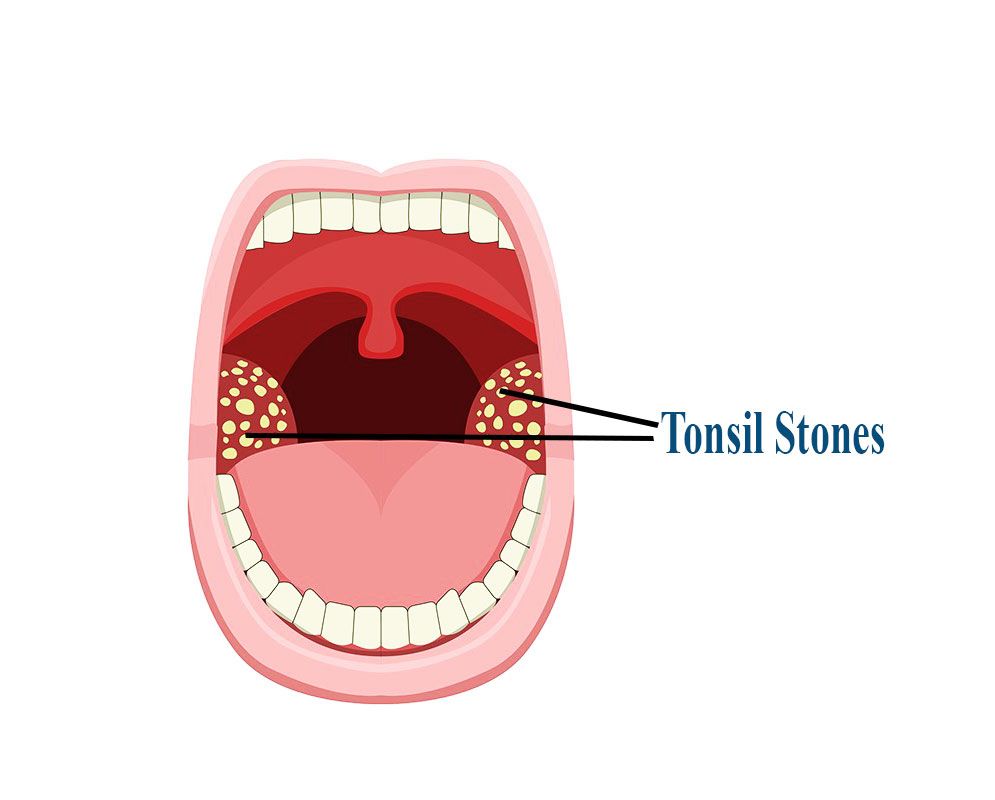
Tonsillectomy in Adults: When Is It Recommended?
For adults with chronic or recurrent tonsillitis, a tonsillectomy (surgical removal of the tonsils) may be considered. But when might a doctor recommend this procedure?
Guidelines for considering tonsillectomy in adults typically include:
- Seven or more episodes of tonsillitis in one year
- Five or more episodes in each of the previous two years
- Three or more episodes in each of the past three years
It’s important to note that the decision to perform a tonsillectomy in adults is not taken lightly. While the tonsils play a role in preventing infection, their function diminishes in adulthood. If an individual seems more prone to infections due to their tonsils, removal may be the best option.
Are there potential benefits and risks associated with tonsillectomy in adults? The primary benefit is the elimination of recurring tonsillitis episodes. However, the procedure does carry some risks, including:
- Postoperative pain and discomfort
- Bleeding
- Infection
- Reaction to anesthesia
The decision to undergo a tonsillectomy should be made in consultation with a healthcare provider, considering the individual’s specific circumstances and medical history.

Preventing Tonsillitis in Adults: Practical Strategies
While it’s not always possible to prevent tonsillitis, there are several measures adults can take to reduce their risk of infection:
- Practice good hand hygiene by washing hands frequently and thoroughly
- Avoid close contact with individuals who have active tonsillitis or other upper respiratory infections
- Avoid sharing utensils, drinks, or personal items with others
- Maintain a healthy lifestyle to support immune function, including a balanced diet, regular exercise, and adequate sleep
- Avoid smoking and limit alcohol consumption, as these can irritate the throat and weaken the immune system
- Consider using a humidifier in dry environments to keep the throat moist
Can certain lifestyle changes help reduce the frequency of tonsillitis episodes? While not a guarantee, adopting healthier habits can potentially decrease the likelihood of recurrent infections. This includes managing stress, as chronic stress can weaken the immune system and make individuals more susceptible to infections.

Complications of Untreated Tonsillitis in Adults
While most cases of tonsillitis in adults resolve without serious consequences, untreated or severe cases can lead to complications. These may include:
- Peritonsillar abscess (collection of pus behind the tonsil)
- Spread of infection to nearby tissues
- Difficulty breathing due to severe swelling
- Dehydration from difficulty swallowing
- Rheumatic fever (in rare cases of untreated strep throat)
How can adults recognize the signs of potential complications? Warning signs that warrant immediate medical attention include:
- Severe difficulty swallowing or breathing
- Persistent high fever
- Severe pain that doesn’t respond to over-the-counter pain relievers
- Swelling that extends beyond the tonsils
- Signs of dehydration, such as dark urine or dizziness
Prompt recognition and treatment of these complications can prevent more serious health issues and promote faster recovery.
The Impact of Tonsillitis on Adult Quality of Life
While often considered a minor ailment, tonsillitis can significantly impact an adult’s quality of life, especially in cases of recurrent or chronic infections. The condition can lead to:

- Missed workdays and reduced productivity
- Disrupted sleep patterns due to discomfort
- Social isolation during active infections
- Chronic fatigue and reduced overall well-being
- Increased healthcare costs for recurrent episodes
How can adults manage the broader impacts of tonsillitis on their daily lives? Strategies may include:
- Communicating with employers about the need for sick leave or work-from-home arrangements during active infections
- Planning ahead for potential episodes by keeping necessary supplies on hand
- Seeking support from family and friends during recovery periods
- Exploring stress-management techniques to cope with the physical and emotional toll of recurrent infections
- Discussing long-term management strategies with healthcare providers, including the potential benefits of tonsillectomy for severe recurrent cases
By understanding the potential impacts and developing coping strategies, adults can better manage the challenges posed by tonsillitis and maintain their quality of life.

Tonsillitis in adults: Symptoms, treatment, and recovery
Tonsillitis is more common in children and teenagers, but adults can get it too. In adults, tonsillitis may last around a week, but sometimes, symptoms persist for longer or can be recurrent.
Both viral and bacterial infections can cause tonsillitis, which refers to inflammation of the tonsils.
Keep reading to learn more about tonsillitis in adults, including the risk factors and treatments.
Share on PinterestSwollen lymph nodes are a common symptom of tonsillitis in adults.
The symptoms of tonsillitis in adults include:
- sore throat
- red, swollen tonsils
- difficulty swallowing
- fever
- headache
- coughing
- sore, swollen lymph nodes in the neck
- fatigue
- nasal congestion
- sneezing
- loss of appetite
- hoarse voice
Viruses are the most common cause of tonsillitis in adults and children, being responsible for up to 70% of cases, according to the American Academy of Otolaryngology — Head and Neck Surgery. The viruses at work include those that cause the common cold and laryngitis, as well as the Epstein-Barr virus, which is responsible for mononucleosis.
The viruses at work include those that cause the common cold and laryngitis, as well as the Epstein-Barr virus, which is responsible for mononucleosis.
When adults come down with tonsillitis due to a bacterial infection, group A Streptococcus is the usual culprit. People sometimes refer to this illness as strep throat. Its onset is usually more sudden than that of viral infections, and people do not typically have a cough, which is frequently present with a viral infection.
Other potential indications of bacterial tonsillitis are:
- tender lymph nodes in the neck
- white, pus-filled spots on the tonsils
- bad breath
- fever
Children and teenagers are more likely than adults to get tonsillitis, including that due to group A Streptococcus. According to the Centers for Disease Control and Prevention (CDC), only about 1 in 10 adults with a sore throat actually have strep throat.
As tonsillitis is more common in children and also very contagious, the factors that place adults at higher risk of developing it include:
- frequent contact with young children — for example, as a parent or teacher
- working in crowded conditions, such as a day care center
- living in crowded conditions, such as military barracks
Tonsillitis usually gets better with several days of self-care and rest at home.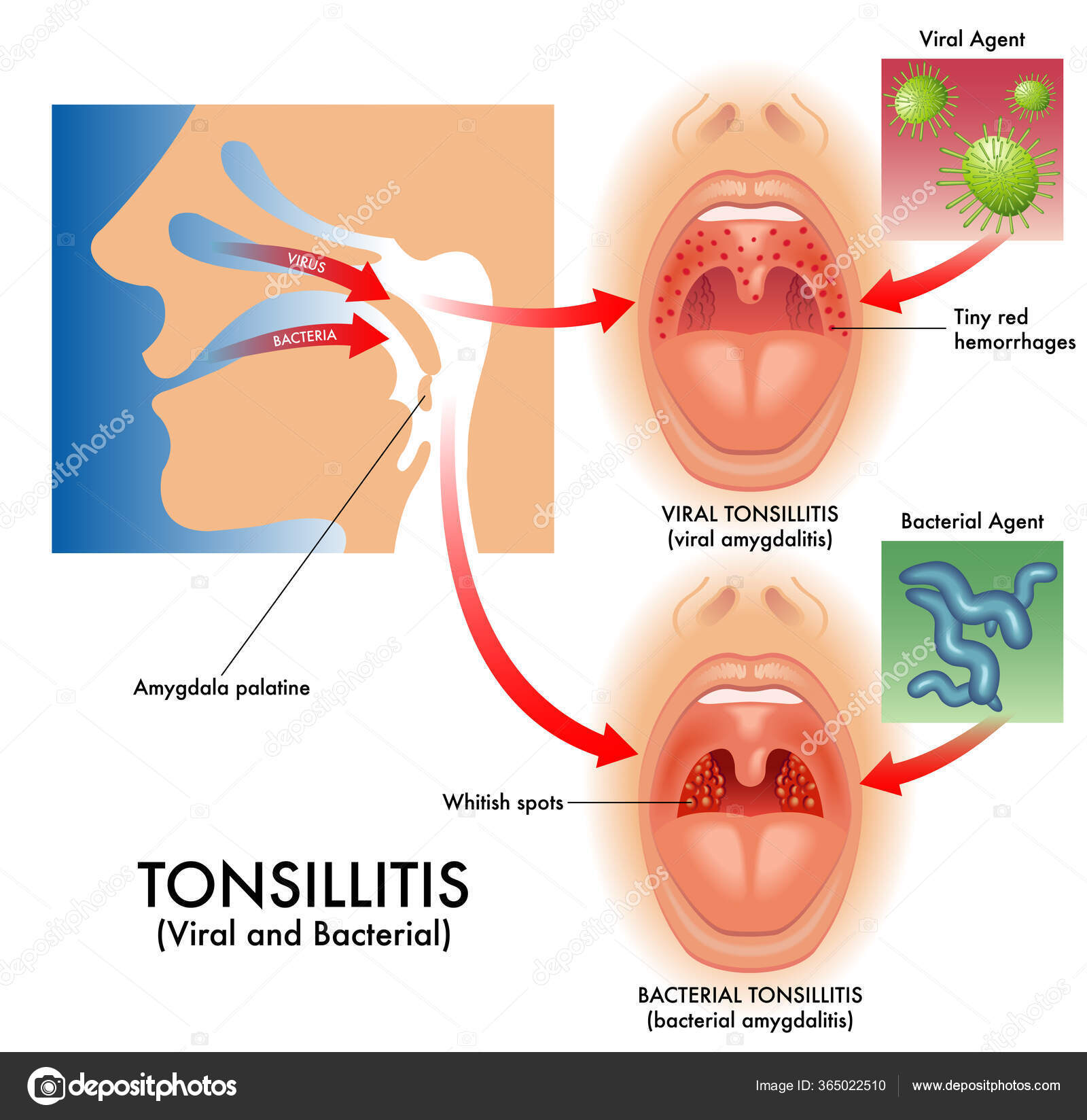
If it is not improving, it is getting worse, or the symptoms are so severe that the individual is not able to eat or drink as necessary, it is a good idea to see a doctor.
As most cases of tonsillitis in adults, as with children, are due to viruses, rest and self-care at home are usually the only treatments necessary. Commonly recommended self-care practices include:
- resting as much as possible
- drinking a lot of fluids
- taking over-the-counter (OTC) medications for pain and discomfort
- using a humidifier to keep household air moist
- eating soft foods and frozen foods, such as popsicles
- using OTC lozenges to help keep the throat moist
However, if testing reveals that tonsillitis is due to a bacterial infection, a doctor may prescribe antibiotic therapy. In situations where it is not clear whether bacteria are the cause, some doctors recommend a strategy of delayed antibiotics, with individuals taking medication if they meet certain criteria.
Penicillin and amoxicillin are the antibiotics that doctors prescribe most often to adults with bacterial tonsillitis. People who are allergic to penicillin antibiotics will receive a suitable substitute.
Using antibiotics, when appropriate, can shorten the duration of symptoms and reduce the risks of complications, such as rheumatic fever.
Various home remedies are available to help adults take care of themselves during a bout of tonsillitis. People can try:
- gargling with salt water (half a teaspoon of salt per eight ounces of warm water) while taking care not to swallow the water
- wrapping the neck with a cloth, hot compress, or heating pad
- drinking herbal tea with lemon and honey
- drinking hot water with lemon, honey, and a dash of cayenne pepper
Most cases of tonsillitis in adults resolve within a week, but for some people, the inflammation and discomfort last much longer.
Some people also experience frequently recurring bouts of tonsillitis. A doctor may recommend that a person undergo the removal of their tonsils, called a tonsillectomy, if they have:
A doctor may recommend that a person undergo the removal of their tonsils, called a tonsillectomy, if they have:
- seven or more episodes of tonsillitis in 1 year
- five or more episodes in each of the previous 2 years
- three or more episodes in each of the past 3 years.
The tonsils’ main function is to help prevent infection, but in adults, this role is diminished. Therefore, if someone seems to be more prone to infections instead, removal may be the best option.
Although a tonsillectomy will put an end to an adult’s problems with recurring tonsillitis, researchers have found that there is uncertainty among healthcare providers regarding the most cost effective stage of the disease to pursue the procedure for adults.
Pain is common after a tonsillectomy. Just as children should stay home from school for 2 weeks or so after surgery, adults need to give themselves and their body a chance to rest and recover.
Although swallowing might be difficult after the procedure, experts recommend as rapid a return to solid foods as possible.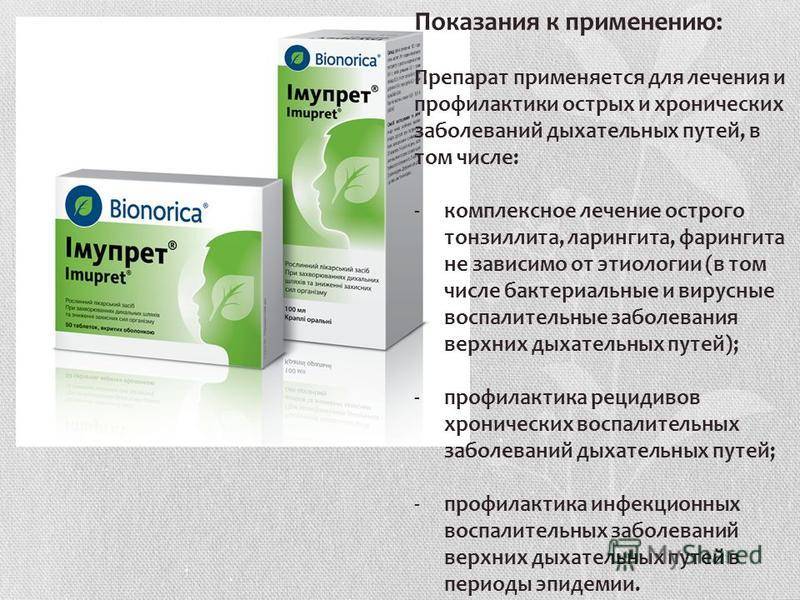
Tonsillitis may be a common condition in children, but it can also affect adults.
Viral infections cause most cases of tonsillitis in adults and children, and at-home treatment with rest, fluids, and OTC pain relievers is usually sufficient.
However, bacteria do cause some cases of adult tonsillitis, many of which are due to strep throat. Adults with this type of tonsillitis can benefit from seeing a doctor and taking antibiotics.
Home Care after Tonsillectomy and Adenoidectomy – Adult
Main Content
Tonsillectomy is the removal of the tonsils. Adenoidectomy is the removal of the adenoids. Both surgeries may be done together or only one may be done.
General Information
You may lack energy for several days, and may also be restless at night. This will improve over 3 to 4 days after an adenoidectomy, and 10 to 14 days after a tonsillectomy. Recovery from an adenoidectomy alone is easier than recovery from a tonsillectomy. It is quite common for you to feel progressively worse during the first 5 to 6 days after surgery. You may also become constipated during this time for three reasons: you will not be eating your regular diet, you will be taking pain medications, and you may be less active.
You may also become constipated during this time for three reasons: you will not be eating your regular diet, you will be taking pain medications, and you may be less active.
Diet
It is important for you to drink plenty of fluids for the first 3 days. You should try to drink one drink every hour you are awake. You may not feel like eating after several days. This is alright, as long as you drink lots of fluids. Signs that you need to drink more are when the urine is darker in color (urine should be pale yellow). A high fever that persists may also be a sign that you are not taking in enough fluids. As your appetite improves, solid foods and chewing are strongly encouraged. There are no limits on the sort of foods you can eat. You cannot damage the throat by eating any particular type of food. Favorite liquids can be consumed such as popsicles, slushes, and soft drinks.
Activity
You should rest at home for the first 48 hours. Activity may increase as strength returns.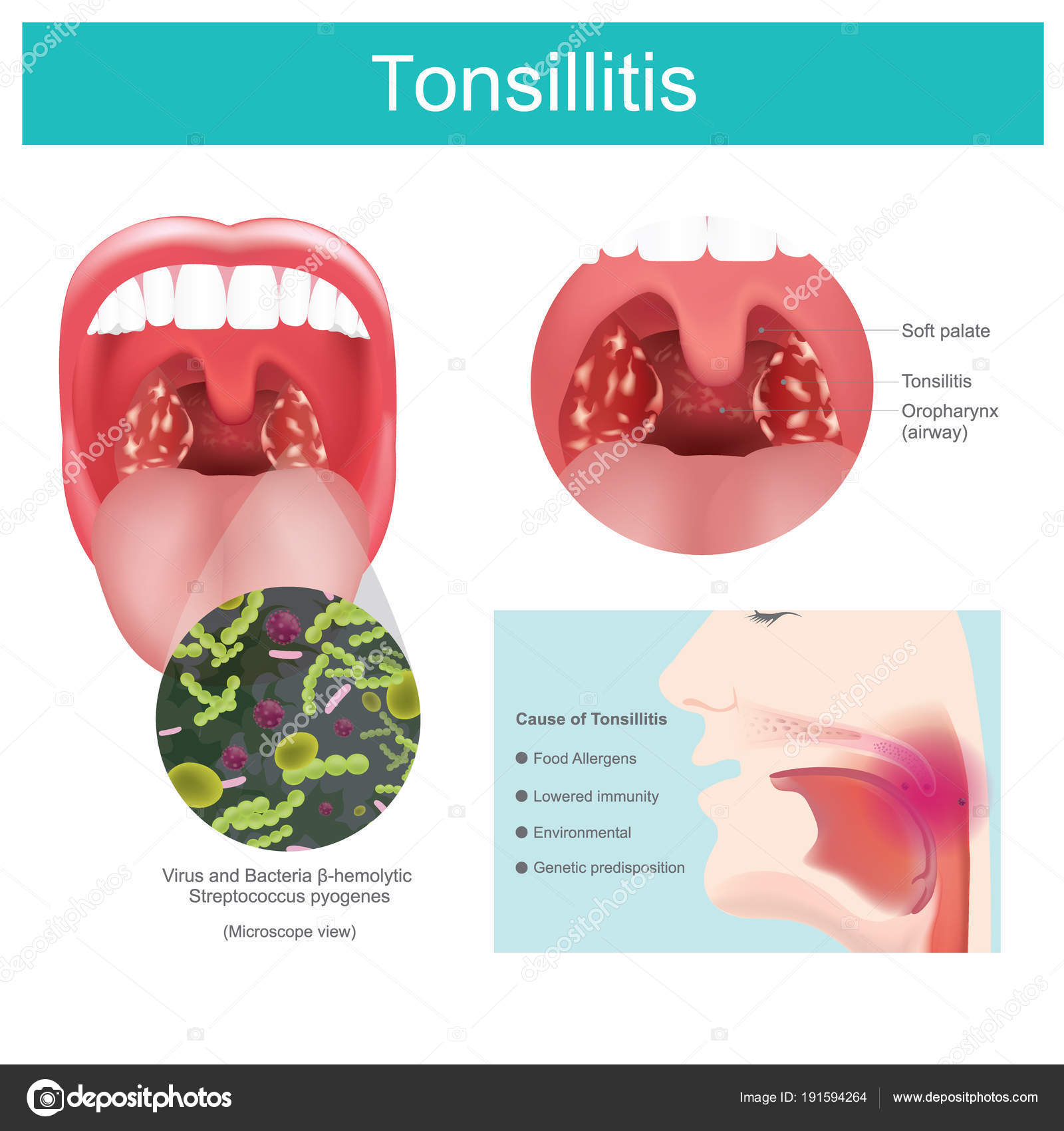 Generally, you may return to work approximately 10 days following a tonsillectomy, and about 3 days after an adenoidectomy. You should avoid vigorous activity for 14 days after surgery.
Generally, you may return to work approximately 10 days following a tonsillectomy, and about 3 days after an adenoidectomy. You should avoid vigorous activity for 14 days after surgery.
Pain
Throat and ear pain can be severe after a tonsillectomy. Take regular doses of pain medicine as prescribed. Tylenol or the prescribed narcotic pain medicine should be taken as instructed. 24 hours after your surgery, you may add ibuprofen for pain control. NO Aspirin or other blood thinners are to be taken for 2 weeks after surgery. Chewing gum may be helpful in lessening muscle spasms and is encouraged. Take an oral steroid, if prescribed; one on day 3 or 4 after surgery may also help with pain.
Bad Breath/Snoring
Bad breath is very common due to the healing in the back of the throat. You may gargle with a mild salt water solution to improve the bad breath (1/2 teaspoon table salt to 8 oz. of warm tap water). You may also chew gum. Most patients breathe through the mouth and snore during the recovery period due to swelling. This may last 2-3 weeks. It may be helped by propping up with pillows and using an ice collar. Turning on a humidifier at bedtime may lessen throat dryness caused by mouth breathing. Avoid over-the-counter mouthwashes (Cepacol, Scope, Listerine, etc.), as they tend to dry the throat and cause discomfort.
This may last 2-3 weeks. It may be helped by propping up with pillows and using an ice collar. Turning on a humidifier at bedtime may lessen throat dryness caused by mouth breathing. Avoid over-the-counter mouthwashes (Cepacol, Scope, Listerine, etc.), as they tend to dry the throat and cause discomfort.
Bleeding
There should be NO bleeding from the nose or mouth. If you have any bleeding at all, sit upright and begin swishing the mouth out with cold ice water. This may help stop the bleeding (rinse and spit over and over). If there is anything more than very minimal bleeding, go to the nearest emergency room. Between 5 and 10 days after surgery, the white or grayish membrane (soft scab) breaks off in the back of the throat. A small amount of bloody mucus may be spit up. If this continues after a few minutes, please call the doctor. If you are unable to reach the doctor quickly, please go to the emergency room.
Fever
It is normal for you to have a slight fever (99. 0° to 101.0°) for the first few days following surgery. Good fluid intake and Tylenol will help keep the fever down. If the fever is over 101 degrees, contact your doctor.
0° to 101.0°) for the first few days following surgery. Good fluid intake and Tylenol will help keep the fever down. If the fever is over 101 degrees, contact your doctor.
Nausea/Vomiting
It is not unusual for you to feel sick following a tonsillectomy. You may take the medication prescribed for nausea at this time. If vomiting persists into late evening, you may want to contact your doctor for another medication to help you feel better. If you are still vomiting the day after surgery, you need to notify the doctor or go to the emergency room.
Medications
Take the following medications as prescribed to you:
- Narcotic pain medication: Norco or Lortab (Hydrocodone/Acetaminophen) are generally prescribed to adults. This is a narcotic medication to be used every 4-6 hours as needed for severe pain only. After the first few days, you should attempt to use OTC Tylenol in place of this medication. Do not exceed 4g of Tylenol in 24 hours.

- Antibiotic: Sometimes a penicillin antibiotic such as Amoxicillin is prescribed to be used a few days after surgery. If you are allergic to penicillin, you will receive a different antibiotic.
- Carafate: This medication is prescribed in liquid form. It is used to coat your throat to provide a soothing effect. Take as prescribed.
- Prednisone: A steroid taper is often prescribed to help with post-operative pain. Take as prescribed.
For Questions or Emergency Care
Call the office at 601-984-5160. You may need to speak with the doctor on-call.
Back to ENT Patient Information
Tonsillitis – causes, symptoms, where to get treatment – MSZ.RF
Otolaryngologist NIKIO them. L.I. Sverzhevsky about the dangers of chronic tonsillitis and how it is treated today
Chronic tonsillitis and its exacerbation (or simply tonsillitis) are one of the most common diseases of the oropharynx. Most often, people get sick in spring and autumn. And although today medicine has effective means to treat the disease, many still believe in the healing power of a warm scarf and do not rush to the clinic.
And although today medicine has effective means to treat the disease, many still believe in the healing power of a warm scarf and do not rush to the clinic.
Pavel Leonidovich Chumakov, otolaryngologist, Ph.D. NIKIO them. L.I. Sverzhevsky.
– Why does tonsillitis occur?
Tonsillitis is an inflammation of the palatine tonsils. Acute infection is most often caused by group A beta-hemolytic streptococcus. If it is not stopped in time, chronic tonsillitis develops. The tonsil itself is arranged in such a way that it favors the spread of infection: it has gaps (crypts) in which microorganisms settle and cause their sclerosis. A stagnant process develops. Nearby are many small blood vessels (capillaries). Microbes secrete their toxins there, which poison the body, causing inflammation.
– Symptoms of tonsillitis that are important to know
The hallmark of chronic tonsillitis is the presence of plugs (purulent lumps of yellowish-gray color on the tonsils with an unpleasant odor).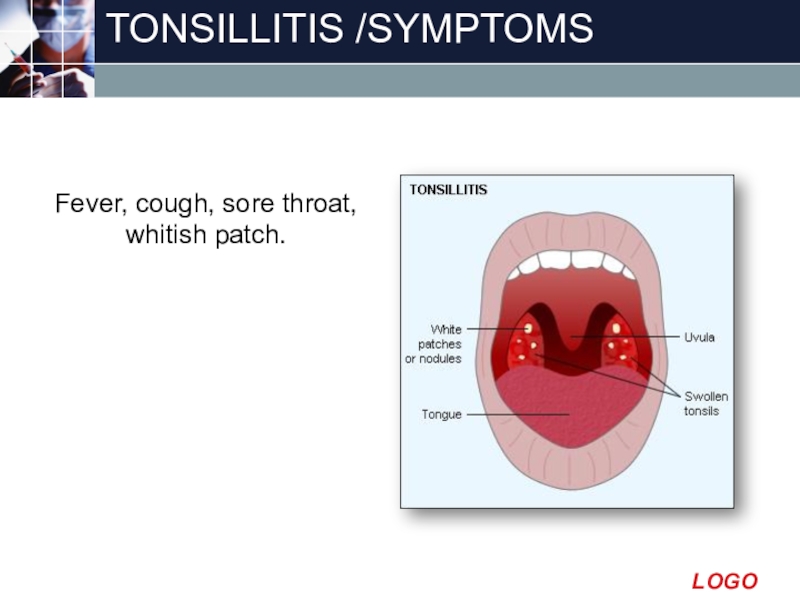 Alarming symptoms: fever, unilateral sore throat and enlarged submandibular lymph nodes. The disease is accompanied by intoxication, which is manifested by a feeling of weakness, increased fatigue, lack of appetite.
Alarming symptoms: fever, unilateral sore throat and enlarged submandibular lymph nodes. The disease is accompanied by intoxication, which is manifested by a feeling of weakness, increased fatigue, lack of appetite.
If you have a sore throat that does not go away for 2-3 days, and a temperature above 38 degrees, you should immediately call a doctor at home. If it becomes difficult to breathe, it means that the infection has moved to the epiglottis or bronchopulmonary complications develop. In these cases, there is no need to wait for the local doctor – you need to call an ambulance.
– How is tonsillitis treated today?
Acute tonsillitis is treated at home or in an infectious diseases hospital.
In chronic tonsillitis, depending on how far the inflammatory process has gone, the treatment can be either outpatient with the use of various medications for washing the tonsils, or inpatient for a radical operation – tonsillectomy.
First, we perform a comprehensive examination of the ENT organs for the patient: endoscopy of the nasal cavity, examination of the oropharynx, pharyngoscopy. We evaluate the sanitation of the oral cavity, since often the focus of infection is located in the dentoalveolar system.
If surgical treatment cannot be avoided, the palatine tonsils are removed completely, with a capsule, so that no lymphoid tissue remains and relapses of the disease do not occur. The operation is carried out by the “cold method” – using a surgical scalpel or less traumatic – using physical methods of influence: laser, electrocoagulation, radio wave therapy.
Today, in most cases, tonsillectomy is performed under general anesthesia in order to completely eliminate pain in the patient and provide the necessary conditions for the surgeon to work. On average, it lasts from 40 minutes to an hour. After that, the patient is transferred to the postoperative observation room, where the surgeon and the anesthesiologist monitor his health.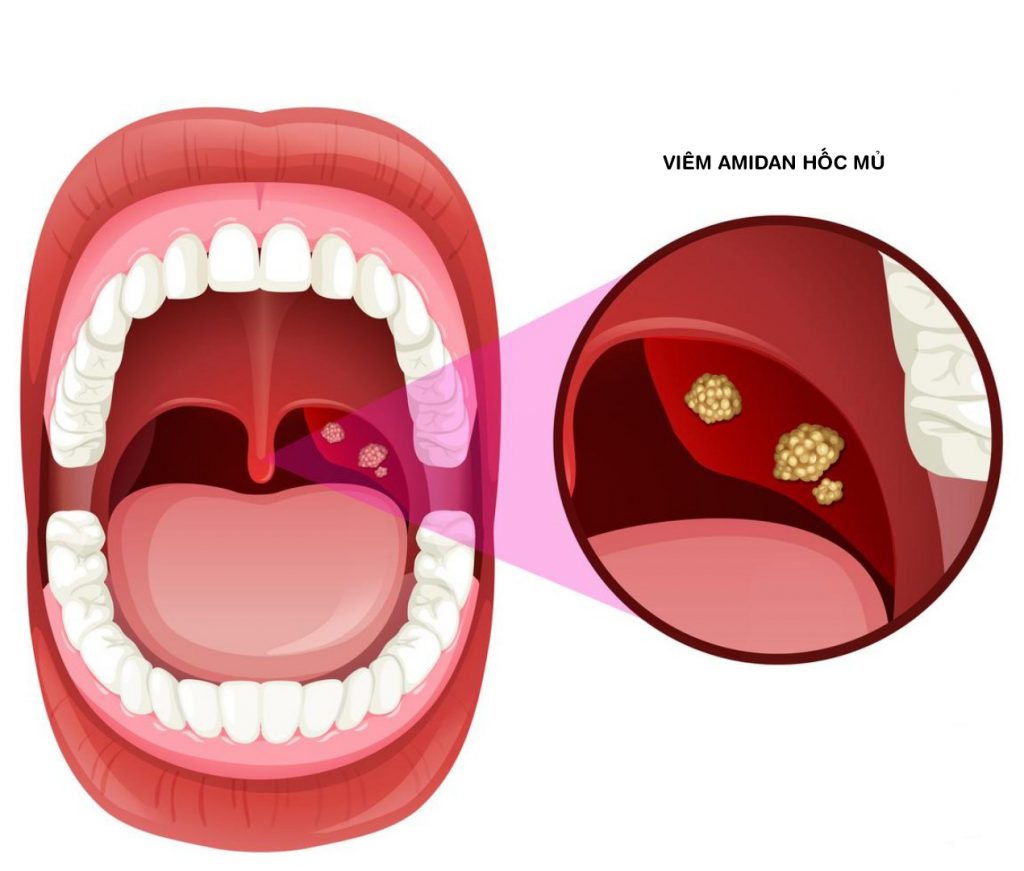 Read more about the treatment of tonsillitis here.
Read more about the treatment of tonsillitis here.
– Laser tonsil removal is better than instrumental?
No, it’s just a myth among patients. The instrumental (“cold”) technique has been used for many years, it is used all over the world and is in no way inferior to the laser. It must be clearly understood: the name “laser tonsillectomy” does not mean that the operation takes place only with the use of a laser. In fact, we are talking about laser assistance: part of the surgical stage – the incision and separation of the palatine tonsil is done with a laser, and the rest of the stages are performed according to the generally accepted method, i.e. instrumentally.
It would be premature to say that laser removal of palatine tonsils is more effective.
– What can a patient expect after tonsil removal?
On average, the recovery period after tosillectomy takes 2 weeks. At first, when the healing process is underway, there is a slight discomfort (sore throat, pain when swallowing), but for patients who endure frequent sore throats, this condition is familiar. A day after the operation, you should not limit yourself in voice and physical activity: for someone who actively talks and eats, the recovery process is faster. It all depends on compliance with the regimen: if a person does not follow the doctor’s recommendations, then healing is slow.
A day after the operation, you should not limit yourself in voice and physical activity: for someone who actively talks and eats, the recovery process is faster. It all depends on compliance with the regimen: if a person does not follow the doctor’s recommendations, then healing is slow.
After healing has taken place, the patient begins to live a different life: he no longer has angina. He can lead a more active lifestyle – drink drinks from the refrigerator, eat ice cream. If the operation is performed correctly, in the future it will not cause any complications in the pharynx.
Competent tonsillectomy can be compared with the state when a person has a filling on a tooth: at first he feels it, and after a while he completely forgets about it.
– And what will happen if you don’t hurry with the treatment?
If the infectious process goes beyond the palatine tonsils, complications such as paratonsial abscess, parapharyngitis or mediastinitis may begin. Also, not chronic tonsillitis is the cause of acute rheumatic fever and glomerulonephritis. These conditions will require mandatory hospitalization, and in some cases, emergency surgical treatment and stay in intensive care units.
Also, not chronic tonsillitis is the cause of acute rheumatic fever and glomerulonephritis. These conditions will require mandatory hospitalization, and in some cases, emergency surgical treatment and stay in intensive care units.
– Is it possible for patients from other cities to get treatment in your clinic under the MHI policy?
Absolutely real! Regardless of the place of residence, any citizen of the Russian Federation who has a compulsory medical insurance policy can be treated at the NIKIIO them. L.I. Sverzhevsky. All the methods of treatment of chronic tonsillitis I have listed (including the laser) will be completely free for the patient.
| +7 (495) 587-70-88 or leave a request on the msz.rf website. Citizen information project services, as well as medical care for patients in the hospital, are provided free of charge. | SUBMIT YOUR APPLICATION |
Source: information project
“Moscow – the capital of health”
Treatment of chronic tonsillitis
This is a lesion of the palatine tonsils, visible on the sides of the pharynx during opening of the mouth. The palatine tonsils consist of immune lymphoid tissue and have the function of protecting against pathogenic microbes (viruses, bacteria and fungi) that come with food or affect the upper respiratory tract. However, in some cases, the palatine tonsils themselves become the place in which microbes multiply, from where they spread throughout the body. Then there is chronic tonsillitis.
The palatine tonsils consist of immune lymphoid tissue and have the function of protecting against pathogenic microbes (viruses, bacteria and fungi) that come with food or affect the upper respiratory tract. However, in some cases, the palatine tonsils themselves become the place in which microbes multiply, from where they spread throughout the body. Then there is chronic tonsillitis.
Forms of chronic tonsillitis
- Simple form or compensated – all manifestations of inflammation are limited to the area around the palatine tonsils, cervical lymph nodes may also become inflamed, but symptoms from the whole body do not appear. In the area of the tonsils, redness, an increase in their size, the appearance of films, adhesions with arches, swelling of the arches, pain and other unpleasant sensations in this area are noted.
- Toxic-allergic form 1 or decompensated TAF 1 – changes appear on the part of the whole organism.
 There is weakness, decreased ability to work, minor pain in muscles and joints, fever up to 38 degrees, discomfort in the heart area without changes on the ECG.
There is weakness, decreased ability to work, minor pain in muscles and joints, fever up to 38 degrees, discomfort in the heart area without changes on the ECG. - Toxic-allergic form 2 or decompensated TAF 2 – there are severe changes in organs and systems, complications develop. It can be kidney, liver failure, arthritis, heart rhythm disturbances, rheumatism, heart defects, fever over 38 degrees and other severe local and general complications.
Can chronic tonsillitis cause complications?
The actual development of the toxic-allergic form of chronic tonsillitis is a set of complications. They are due to the fact that the presence of constant multiplication of microbes in the tonsils leads to impaired immune response. Microbes have evolved to make their immune parameters similar to those of humans. This causes the immune system to attack not only microbes, but also its tissues and cells. It turns out that once an immune response against one’s own tissues has arisen, it can persist for life, leading to the gradual destruction of the attacked target. The sooner the treatment of chronic tonsillitis begins, the less likely it is.
The sooner the treatment of chronic tonsillitis begins, the less likely it is.
The most common complications of chronic tonsillitis are: acute glomerulonephritis, rheumatism
Sign up for a consultation
Removal/Treatment
Taking into account the potential danger to the whole body, which is chronic tonsillitis, its treatment should be as responsible and comprehensive as possible, including several different approaches.
First of all, it is necessary to choose a sufficiently long antibiotic therapy (if a bacterial pathogen is detected). For this purpose, an antibiotic susceptibility test is carried out. It is also desirable to use bacteriophages, which increase the effectiveness of antibiotic therapy for chronic infections.
Carrying out physiotherapy allows you to activate blood circulation and reduce the number of pathogenic microorganisms on the surface of the tonsils, inhalations can be used for the same purpose.
Surgical removal of the tonsils (tonsils) in various ways is used when there is already a toxic-allergic form 2, in the absence of the effect of other methods of treatment. With a simple form of chronic tonsillitis, you should not immediately resort to surgical treatment. Since the palatine tonsils are a very important immune organ.
With a simple form of chronic tonsillitis, you should not immediately resort to surgical treatment. Since the palatine tonsils are a very important immune organ.
Common symptoms in chronic tonsillitis
Sore throat due to inflammatory changes in the tonsils, when biologically active substances are released that irritate the nerve endings. The palatine arches, the surrounding fatty tissue are also involved in the process. Perhaps a multiple increase in pain during the development of an abscess near the tonsil (peritonsillar).
Pain on swallowing is due to displacement of structures involved in inflammation. When swallowing liquid food, the pain can be much milder than when swallowing solid food.
Cough with tonsillitis is not an independent symptom. Appears with simultaneous involvement in the process of inflammation of the nasal cavity or respiratory tract. It is usually dry and gives a sore throat.
White plaque on the palatine tonsils (tonsils) is a discharge with dead leukocytes and microbes. In the future, these secretions themselves can serve as a food base for new microbes. It is advisable to get rid of them as soon as possible with the help of rinses and sprays.
Odor from the mouth also appears due to the intensive multiplication of microbes in the tonsils. They decompose secretions from the tonsils, releasing an unpleasant odor. Bad breath is also a sign of other diseases, such as caries, which can be combined with chronic tonsillitis.
Headaches with tonsillitis are caused by the release of toxic substances from the tonsils, which enter the brain through the veins in the head area and negatively affect its work.
Average treatment times
Terms of treatment of chronic tonsillitis may vary depending on its intensity, the degree of damage to the tonsils, the number of types of pathogens. In the simplest cases, one antibacterial drug is selected, which is prescribed for a period of more than one week. Then the effectiveness of the treatment is monitored. However, it is better when the treatment is immediately prescribed as a complex one, using a combination of antimicrobials and local rinses or sprays, physiotherapy, general strengthening drugs. Then the treatment time will be longer, but the likelihood of recurrence of chronic tonsillitis will be much lower.
In the simplest cases, one antibacterial drug is selected, which is prescribed for a period of more than one week. Then the effectiveness of the treatment is monitored. However, it is better when the treatment is immediately prescribed as a complex one, using a combination of antimicrobials and local rinses or sprays, physiotherapy, general strengthening drugs. Then the treatment time will be longer, but the likelihood of recurrence of chronic tonsillitis will be much lower.
Research and diagnostic equipment
For the diagnosis of chronic tonsillitis, the causative agent or causative agents are first determined. For this, smears and scrapings, swabs from the palatine tonsils and pharynx for bacteriological culture, examination under a microscope, PCR or other methods are used. Specific immunoglobulins G against a certain pathogen can be determined in the blood, and the intensity of the immune response is estimated by their level. Also in the blood there are general signs of inflammatory diseases, which will disappear over time with the effective treatment of chronic tonsillitis.
FAQ
How to treat chronic tonsillitis?
Antimicrobials selected on the basis of laboratory tests. For a more reliable effect, it is better to combine them with intensive local physiotherapy, tonics, rinses.
What is chronic tonsillitis in adults?
This disease affects the palatine tonsils, lymphatic organs in the pharynx. Normally, they perform the function of protecting against microbes in the oral cavity and pharynx. However, in chronic tonsillitis, they can become a source of development of these same microbes and cause an incorrect immune response of the whole body with the development of severe autoimmune complications.
What are the causes of chronic tonsillitis in adults?
Most often multiple. This is a hereditary predisposition, weak immunity, malnutrition, frequent infectious diseases of ENT organs, smoking. Ultimately, a pathogen or several pathogens appear that multiply on the palatine tonsils and are constantly present there.
How does chronic tonsillitis manifest itself?
Chronic tonsillitis can be manifested by local symptoms due to the presence of inflammation in the tonsils: sore throat, bad breath, plaque on the tonsils and others. However, over time, general symptoms may be added: weakness, pain in muscles and joints, decreased ability to work, fever. As well as symptoms of complications: pain and heart rhythm disturbances, inflammation in the joints, swelling on the face or legs, and others.
However, over time, general symptoms may be added: weakness, pain in muscles and joints, decreased ability to work, fever. As well as symptoms of complications: pain and heart rhythm disturbances, inflammation in the joints, swelling on the face or legs, and others.
Is chronic tonsillitis in adults treated completely?
Even after unsuccessful attempts at antimicrobial treatment, there is always the possibility of getting rid of chronic tonsillitis with surgery. By the time of the appointment of surgical treatment, the palatine tonsils cease to perform a protective function and become only a source of reproduction of microbes.
What helps with chronic tonsillitis?
When it comes to a chronic process, only a doctor should determine what helps. There are many antimicrobial or other agents that can help short-term for chronic tonsillitis. However, after their illiterate use, the process can worsen even more and the prospects for complete recovery will decrease. It should be remembered from severe autoimmune complications of chronic tonsillitis and not self-medicate.

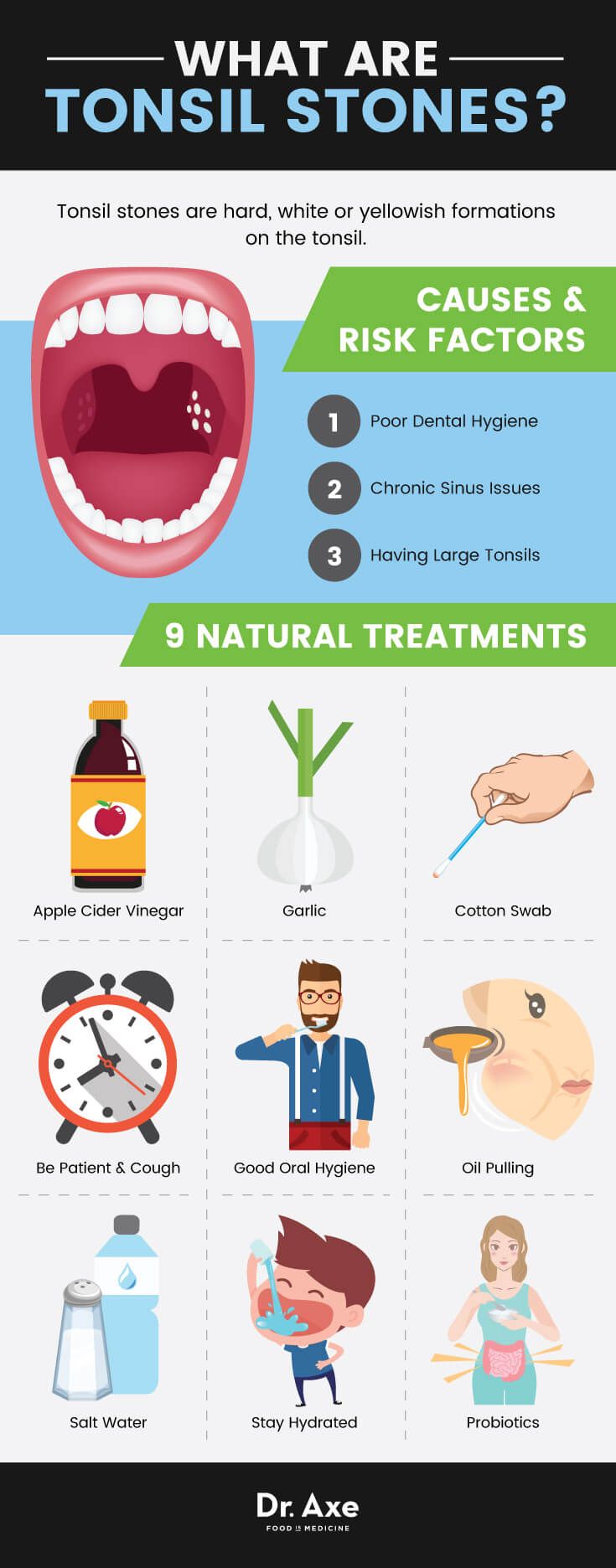
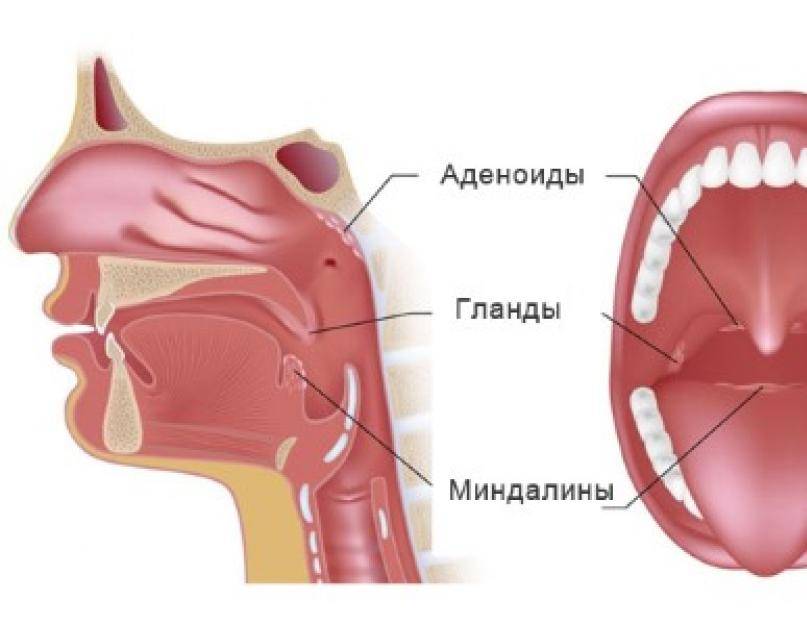 There is weakness, decreased ability to work, minor pain in muscles and joints, fever up to 38 degrees, discomfort in the heart area without changes on the ECG.
There is weakness, decreased ability to work, minor pain in muscles and joints, fever up to 38 degrees, discomfort in the heart area without changes on the ECG.